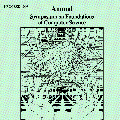This work establishes novel, optimum mixing bounds for the Glauber dynamics on the Hard-core and Ising models using the powerful Spectral Independence method from [Anari, Liu, Oveis-Gharan: FOCS 2020]. These bounds are expressed in terms of the local connective constant of the underlying graph $G$. This is a notion of effective degree of $G$ on a local scale. Our results have some interesting consequences for bounded degree graphs: (a) They include the max-degree bounds as a special case, (b) They improve on the running time of the FPTAS considered in [Sinclair, Srivastava, Stefankonic and Yin: PTRF 2017], (c) They allow us to obtain mixing bounds in terms of the spectral radius of the adjacency matrix and improve on results in [Hayes: FOCS 2006], (d) They also allow us to refine the celebrated connection between the hardness of approximate counting and the phase transitions from statistical physics. We obtain our mixing bounds by utilising the $k$-non-backtracking matrix $H_{G,k}$. This is a very interesting, alas technically intricate, object to work with. We upper bound the spectral radius of the pairwise influence matrix $I^{\Lambda,\tau}_{G}$ by means of the 2-norm of $H_{G,k}$. To our knowledge, obtaining mixing bound using $H_{G,k}$ has not been considered before in the literature.
翻译:暂无翻译




